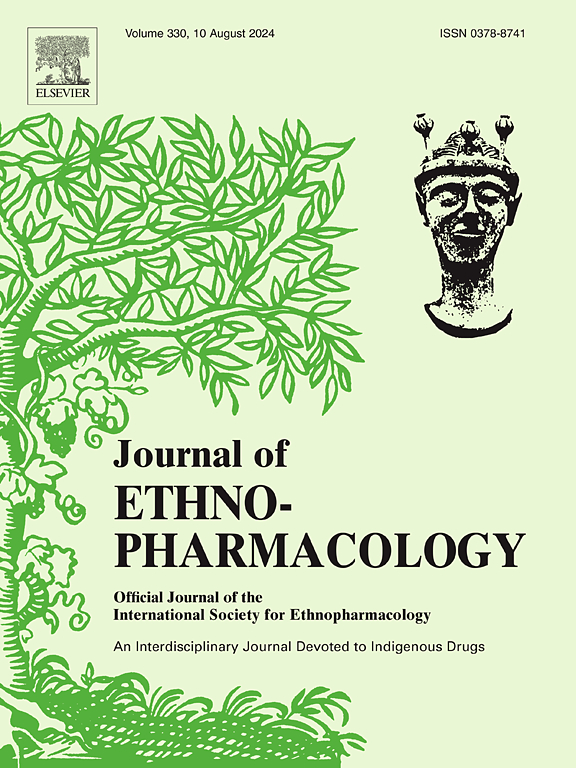Progress in Oplopanax elatus research: Resources, propagation, traditional uses, phytochemistry, pharmacology, pharmacokinetics, quality control, and toxicity
IF 4.8
2区 医学
Q1 CHEMISTRY, MEDICINAL
引用次数: 0
Abstract
Ethnopharmacological relevance
Oplopanax elatus Nakai is a valuable medicinal plant of the Araliaceae family. In China, South Korea, and Russia, O. elatus has a long history of ethnomedical use, particularly for treating neurasthenia, schizophrenia, cardiovascular disease, and other conditions. However, its commercial use is hindered by the scarcity of raw materials, largely due to the depletion of wild resources and the underdeveloped technology for artificial cultivation. Although reviews on O. elatus exist, they lack coverage of recent research advances and fail to address all relevant aspects. Therefore, a comprehensive understanding of current research on this species is crucial for its future applications.
Aim of this review: This paper aims to provide a comprehensive overview of the current state of research on O. elatus and to integrate recent findings that will guide future research and promote the sustainable utilization of this valuable medicinal plant.
Materials and methods
Available information was collected from scientific databases, including Google Scholar, Web of Science, PubMed, ScienceDirect, Baidu Scholar, China National Knowledge Infrastructure, and Ethnobotanical Monographs. A comprehensive literature on traditional use, phytochemistry, pharmacology, pharmacokinetics, quality control, and toxicity published before June 2024. The findings were summarized in this paper.
Results
This paper provided a comprehensive review of the research progress on O. elatus, covering its resource status, propagation, phytochemistry, pharmacology, pharmacokinetics, quality control, and toxicity. Previous studies were summarized and current results were presented. In addition, existing challenges, such as the lack of research on quality control and molecular biology, were highlighted, along with potential approaches to address these issues. Finally, the future development prospects and potential applications of O. elatus were discussed.
Conclusion
O. elatus has significant potential for use in the production of medicinal, functional foods, and cosmetic products. In particular, adventitious root culture could address the current resource challenges associated with O. elatus and facilitate product development and production. However, further research in quality control and molecular biology is required to fully realize its potential.

求助全文
约1分钟内获得全文
求助全文
来源期刊

Journal of ethnopharmacology
医学-全科医学与补充医学
CiteScore
10.30
自引率
5.60%
发文量
967
审稿时长
77 days
期刊介绍:
The Journal of Ethnopharmacology is dedicated to the exchange of information and understandings about people''s use of plants, fungi, animals, microorganisms and minerals and their biological and pharmacological effects based on the principles established through international conventions. Early people confronted with illness and disease, discovered a wealth of useful therapeutic agents in the plant and animal kingdoms. The empirical knowledge of these medicinal substances and their toxic potential was passed on by oral tradition and sometimes recorded in herbals and other texts on materia medica. Many valuable drugs of today (e.g., atropine, ephedrine, tubocurarine, digoxin, reserpine) came into use through the study of indigenous remedies. Chemists continue to use plant-derived drugs (e.g., morphine, taxol, physostigmine, quinidine, emetine) as prototypes in their attempts to develop more effective and less toxic medicinals.
 求助内容:
求助内容: 应助结果提醒方式:
应助结果提醒方式:


